Skid Steer vs. Compact Track Loader: The Ultimate Showdown
- October 20, 2023
- 0 comment
When it comes to heavy-duty equipment for construction or landscaping, the choice between a Skid Steer and a Compact Track Loader (CTL) can be daunting. These workhorses are essential on job sites, and the decision to pick one over the other is not to be taken lightly. As someone who has spent countless hours in the dirt and grime of construction and landscaping projects, I know that the choice between a Skid Steer and a Compact Track Loader (CTL) can be a make-or-break decision. So, let’s dive into the ultimate showdown between these heavy-duty workhorses, evaluating from my personal perspective to help you make the right choice for your needs.
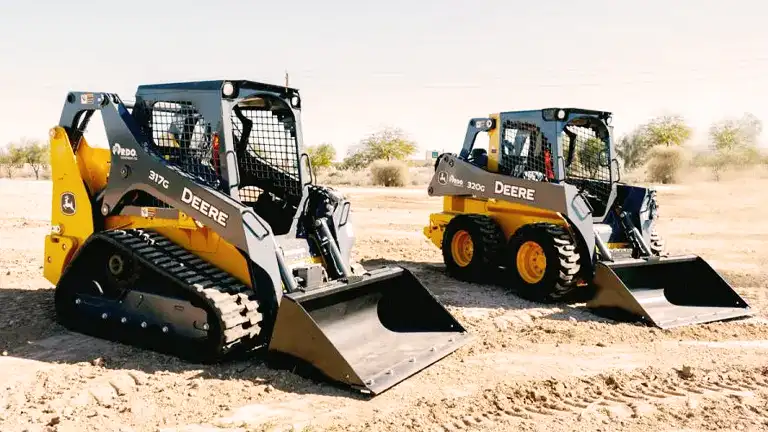
What You Need to Know About Skid Steers
Skid Steers are like the hidden gems of heavy equipment, and I say this from personal experience. These compact powerhouses have a special place in my heart because of their remarkable versatility and adaptability. Whether it’s tight spaces, a need for various attachments, or navigating different terrains, Skid Steers has consistently impressed me. The ease of operation, with intuitive controls and excellent visibility, is a huge plus, especially for those new to heavy machinery. And when it comes to maintenance, they’re relatively hassle-free. Skid Steers are the unsung heroes that keep job sites running smoothly, and if you’re looking for a reliable, all-in-one solution for your heavy-duty tasks, my advice, from one user to another, is to consider a Skid Steer; that won’t let you down.
What You Need to Know About Compact Track Loaders
Compact Track Loaders (CTLs) are a user’s dream come true in heavy equipment, providing unparalleled traction and stability with rubber tracks that can handle a multitude of terrains and reduce ground pressure for delicate surface preservation. Their attachment versatility and ability to work across diverse terrains make them indispensable, akin to a Swiss Army knife for heavy-duty tasks. The enclosed cab design offers operator comfort and noise control for extended shifts, and while CTLs may require a bit more maintenance due to their complex track system, their rugged build and adaptability on challenging terrains make them a worthwhile investment for various applications. In my experience, CTLs are a must-have; I vividly recall how they effortlessly tackled the rough and muddy terrain on a particularly challenging landscaping project, proving their worth time and again.
Performance Metrics
First things first, let’s talk about performance. In this arena, Skid Steers and CTLs bring their A-game, but they shine in different ways. Skid Steers are like the agile gymnasts of the construction world, offering impressive speed and maneuverability. When it comes to zipping around confined job sites or loading materials quickly, they are top-notch. However, if you find yourself battling soft mud, uneven ground, or steep slopes, this is where the CTLs truly strut their stuff. Their rubber tracks provide unrivaled traction and stability, making them the champions of challenging terrains. Let’s delve deeper into the performance metrics of both Skid Steers and Compact Track Loaders (CTLs):
Skid Steers
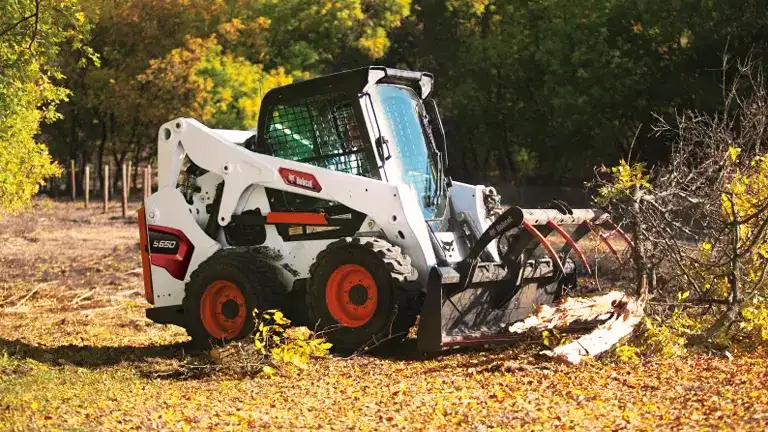
Speed and Agility: Skid Steers are renowned for their nimbleness. With a shorter wheelbase and a turning radius that can make a U-turn within its own footprint, they are perfect for working in tight spaces and maneuvering around obstacles. I’ve found this aspect particularly useful when working in crowded construction sites or confined areas where quick turns and precise positioning are crucial.
Maneuverability: The exceptional maneuverability of Skid Steers makes them ideal for tasks such as grading, digging, and material handling. Their ability to make sharp turns and pivot easily allows operators to work with precision. I’ve often relied on a Skid Steer for grading projects where accuracy is paramount.
Material Handling: Skid Steers excel at tasks like loading and unloading materials. They can quickly scoop up materials, transport them, and dump them into trucks or containers. This is especially valuable in construction and landscaping projects where efficiency is key.
Typical Applications
Because of their wheels, skid steers perform better on hard surfaces like asphalt, concrete, cement, and compact dirt. This makes them great for demolition, roadwork, scrap jobs, and other construction projects. They can also be used for several other jobs including land clearing, grading, farming, landscaping, trenching, and snow removal projects depending on the terrain.
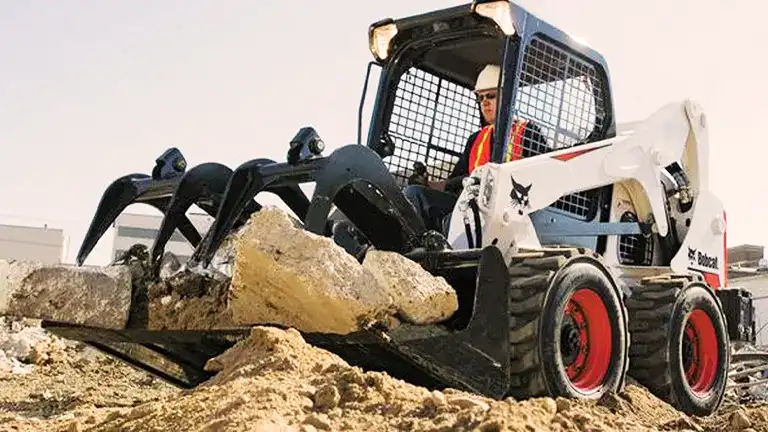
They can also be used in the replacement of forklifts at times due to their ability to handle and transport materials, depending on the attachment.
Pros
- Speed and Maneuverability: Skid Steers are known for their quick and precise maneuvering, making them ideal for projects in confined spaces and tight job sites.
- Material Handling: They excel at tasks like loading, unloading, and transporting materials due to their agility and speed.
- Lift Capacity: Skid Steers generally have a higher lift capacity and longer reach compared to CTLs of the same size, making them better for heavy lifting tasks.
- Lower Maintenance: Their simpler wheel system typically requires less maintenance, resulting in lower upkeep costs.
- Lower Initial Cost: Skid Steers are often more budget-friendly upfront compared to CTLs.
Cons
- Limited Traction: Skid Steers’ wheel system provides less traction, making them less suitable for soft, slippery, or uneven terrains.
- Ground Damage: Their wheels can cause more significant ground damage on sensitive surfaces, which may not be suitable for certain projects.
- Operator Comfort: The open cab design may result in operator discomfort during extreme weather conditions or noisy environments.
Compact Track Loaders (CTLs)
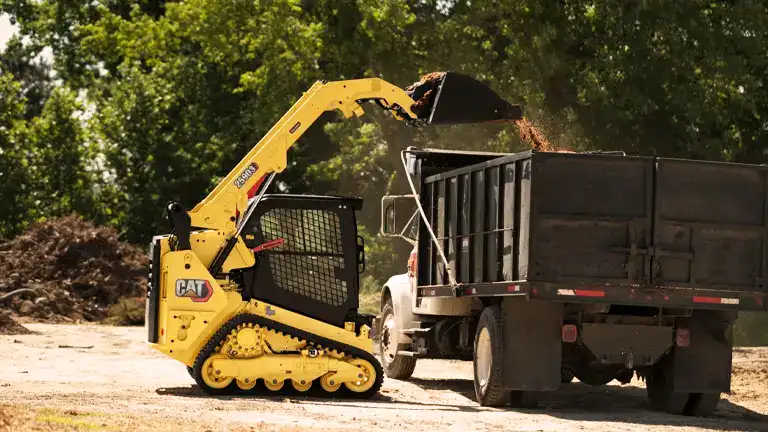
Traction and Stability: CTLs are the champions of traction and stability due to their rubber tracks. These tracks provide significantly better grip on slippery, soft, or uneven terrains. I’ve witnessed CTLs navigate through mud, snow, or steep slopes with ease, making them indispensable on job sites with challenging ground conditions. This is a major advantage for versatility in unpredictable environments.
Reduced Ground Pressure: The rubber tracks of CTLs not only enhance traction but also reduce ground pressure. This is a critical feature for jobs where preserving the ground’s integrity is essential. Landscapers, for instance, often opt for CTLs to avoid damaging lawns or delicate surfaces.
Terrain Versatility: CTLs are adaptable across a range of terrains, thanks to their rubber tracks. They perform exceptionally well on gravel, sand, and uneven ground, making them invaluable for site preparation and land clearing in varied landscapes. The ability to handle different terrains efficiently has been a standout feature in my experience.
Typical Applications
Similar to skid steer loaders, compact track loaders can be used for all types of jobs including demolition, land clearing, forestry, backfilling, paving, pushing materials, dozing, and more. The primary difference between when to use a skid steer or a compact track loader is the type of terrain they’ll be operating on.
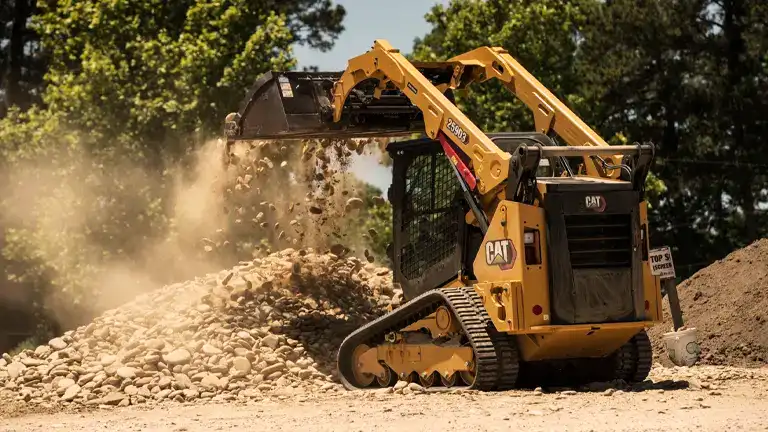
Compact track loaders are more popular in wet, muddy conditions because they provide better traction and flotation than skid steers. That’s why CTLs are more popular in the mid-west and northern regions while skid steers are typically more popular in the drier regions of the south.
Pros
- Superior Traction: CTLs offer unparalleled traction, thanks to their rubber tracks, making them suitable for challenging terrains like mud, snow, and slopes.
- Reduced Ground Pressure: Their tracks distribute weight evenly, reducing ground pressure, which is excellent for delicate surfaces, such as landscaping or preserving lawns.
- Terrain Versatility: CTLs can handle various terrains, from gravel to uneven ground, providing outstanding adaptability.
- Operator Comfort: Enclosed cabs offer operator comfort, climate control, and noise reduction, making long work hours more bearable.
- Stability: CTLs are inherently more stable due to their lower center of gravity, enhancing safety during operation.
Cons
- Higher Maintenance: The complex track system in CTLs may require more maintenance, including periodic track replacement, which can be costly.
- Lower Lift Capacity: They typically have a lower lift capacity and shorter reach compared to Skid Steers of similar size.
- Higher Initial Cost: CTLs often come with a higher upfront cost compared to Skid Steers, which can be a deterrent for those on a tight budget.
Comparing Skid Steers and Compact Track Loaders
Skid Steers – The Agile Workhorses
Skid Steers are like the race cars of heavy machinery. They’re agile, nimble, and lightning-fast. Their short wheelbase and tight turning radius make them masters of maneuverability. When it comes to tight spaces and crowded job sites, they shine. The best example of Skid Steers is the Bobcat S650 Skid Steer.
Bobcat S650 Skid Steer
I’ve had the pleasure of working with the Bobcat S650 Skid Steer, a standout model known for its versatility, lift capacity, and comfort for operators. It’s a true all-rounder for tasks like loading, digging, and more.
Quick Specifications
- Engine Power: 74.3 horsepower
- Operating Capacity: 2,690 lbs (1,221 kg)
- Tipping Load: 5,380 lbs (2,442 kg)
- Maximum Travel Speed: 7.1 mph (11.4 km/h)
- Weight: 8,327 lbs (3,775 kg)
- Bucket Width: Standard: 68 inches (172.7 cm)
- Overall Length: 133 inches (337.8 cm)
- Fuel Tank Capacity: 27.2 gallons (103 liters)
- Hydraulic Pump Capacity: 16.9 GPM (64L/min)
Compact Track Loaders (CTLs) – The Off-Road Titans
Compact Track Loaders on the other hand, are the off-road titans of heavy equipment. What sets them apart are their rubber tracks. These tracks provide unbeatable traction and stability, making CTLs the champions of challenging terrains. Best example is the Caterpillar 259D3 Compact Track Loader.
Caterpillar 259D3 Compact Track Loader
One model that stands out is the Caterpillar 259D3 Compact Track Loader. With its advanced features, exceptional lift capacity, and enhanced operator comfort, it’s a powerhouse for heavy-duty tasks, especially in unpredictable conditions.
Quick Specifications
- Engine: 74.3 hp (55.4 kW)
- Operating Weight: 8986 lbs. (4076 kg)
- Rated Operating Capacity: 2,905 lbs (1,317 kg)
- Hydraulic System: Hydraulic Flow: 23.2 gpm (88 l/min)
- Operating Pressure: 3,335 psi (23,000 kPa)
- Dimensions: Length with Bucket on Ground: 11.5 ft (3.52 m)
- Track Width: 15.7 inches (400 mm)
- Fuel Tank Capacity: 27.4 gallons (103.7 liters)
Comparison Table: Bobcat S650 Skid Steer vs. Caterpillar 259D3 Compact Track Loader
| Features | Bobcat S650 Skid Steer | Caterpillar 259D3 Compact Track Loader |
|---|---|---|
| Performance | Versatile and agile, excels in tight spaces | Outstanding traction and stability on challenging terrains |
| Operator Comfort | Spacious, enclosed cab with climate control | Enclosed, climate-controlled cab with excellent noise reduction |
| Lift Capacity | Impressive lift capacity, suitable for heavy lifting tasks | Great lift capacity, excellent for materials handling |
| Versatility | Well-suited for loading, digging, grading, and more | Adaptability across various tasks and terrains |
| Maintenance | Lower maintenance due to the wheel system | Higher maintenance due to the complex track system |
| Durability | Robust build ensures durability on demanding job sites | Known for long-lasting performance and durability |
| Ease of Operation | User-friendly controls and intuitive design | Easy-to-operate controls for efficient task handling |
| Price | price range of $65,000 | price range of $75,000 |
In the showdown between the Bobcat S650 Skid Steer and the Caterpillar 259D3 Compact Track Loader, the choice hinges on specific project needs. The Bobcat S650 is celebrated for its versatility, agility, and suitability in confined spaces, excelling at tasks like loading and grading. Conversely, the Caterpillar 259D3 stands out with its outstanding traction, stability on challenging terrains, and superior lift capacity. Both machines prioritize operator comfort and offer user-friendly controls, but the 259D3 gains an edge in noise reduction. Maintenance varies, with the S650 requiring less upkeep due to its wheel system, while the 259D3’s complex track system necessitates more attention. When deciding between these heavyweights, consider your project requirements, terrain conditions, and lifting needs to make the optimal choice for your specific job.
Here is the Comparison on Applications using the Bobcat S650 Skid Steer and Caterpillar 259D3 Compact Track Loader:
| Application | Bobcat S650 Skid Steer | Caterpillar 259D3 Compact Track Loader |
|---|---|---|
| Loading and Unloading Materials | Excellent performance, ideal for quick material handling | Great lift capacity and stability, efficient for materials handling tasks |
| Excavation and Digging | Adequate for digging tasks, versatility allows for flexibility | Excellent for excavation due to superior traction and stability |
| Grading and Leveling | Well-suited for grading work, offers precision and maneuverability | Adaptable to grading tasks, excels in challenging terrains |
| Landscaping and Lawn Maintenance | Good for landscaping tasks, but may leave tracks on delicate lawns | Perfect for landscaping, reduces ground pressure for lawn preservation |
| Construction and Site Preparation | Versatile for various construction tasks, agility in tight spaces | Superior performance in site preparation excels on uneven terrains |
| Snow Removal | Suitable for light snow removal tasks | Highly effective for snow removal due to traction and stability |
| Forestry and Brush Clearing | Capable for light forestry tasks | Effective for forestry and brush clearing, offers traction on rough terrain |
| Agricultural Work | Versatile for various farm tasks, agility and maneuverability | Suitable for farm work, preserves soil integrity with reduced ground pressure |
Final Verdict
The choice between the Bobcat S650 Skid Steer and the Caterpillar 259D3 Compact Track Loader should be driven by your specific project requirements. The Bobcat S650 is a versatile all-rounder, excelling in tasks like loading, grading, and construction, particularly in tight spaces. It’s a great choice for applications where maneuverability and quick material handling are essential. On the other hand, the Caterpillar 259D3 stands out for its traction and stability, making it ideal for challenging terrains, excavation, and forestry work. If your projects demand superior performance on uneven or sensitive surfaces, the 259D3 shines. Consider your job’s unique demands, terrain conditions, and materials to choose the machine that aligns best with your project’s needs.
FAQs
- What’s the primary factor that sets Skid Steers and Compact Track Loaders apart?
The primary distinguishing factor between these machines is their mobility systems. Skid Steers have wheels, while Compact Track Loaders have tracks. This fundamental difference impacts their performance and suitability for various tasks. - Do Compact Track Loaders cause less damage to delicate surfaces compared to Skid Steers?
Yes, Compact Track Loaders tend to have lower ground pressure due to their tracks, which makes them less likely to damage delicate surfaces like lawns, landscaping, or existing pavements compared to Skid Steers with wheels. - Which machine is more fuel-efficient, the Skid Steer, or the Compact Track Loader?
In general, Skid Steers tend to be more fuel-efficient on smooth, hard surfaces due to their higher speed capabilities. However, Compact Track Loaders might consume more fuel when working in challenging terrains that demand more traction and power to move. - Can I switch between wheels and tracks on a Compact Track Loader for different jobs?
Most Compact Track Loaders are designed with a fixed track system. However, some models offer optional attachments or systems that can be used to switch between tracks and wheels, providing more versatility for different tasks. - Which machine offers better stability on slopes and hilly terrain?
Compact Track Loaders typically provide better stability on slopes and hilly terrain due to their lower center of gravity and the added traction from their tracks. They are often a preferred choice for working on inclines. - Are there any special considerations for maintenance and servicing between Skid Steers and Compact Track Loaders?
Compact Track Loaders may require more frequent maintenance on their track systems, like tension adjustments and occasional track replacements. Skid Steers usually have simpler wheel-based systems, which might need less attention in this regard. - Can I use the same attachments on both a Skid Steer and a Compact Track Loader?
Many attachments are compatible with both Skid Steers and Compact Track Loaders, but it’s essential to ensure that your specific machine’s hydraulic system can support the attachment you plan to use. Some attachments may work better with one machine type over the other. - Which machine is better suited for snow removal tasks in regions with harsh winters?
Compact Track Loaders are often favored for snow removal in areas with harsh winters. Their tracks provide excellent traction on snow and icy surfaces. However, Skid Steers equipped with snow tires or chains can also be effective for snow removal, depending on the specific conditions and requirements.
In the end, it’s all about the job you need to get done. Both machines are impressive in their own right, and your choice should align with your unique requirements. The Skid Steer and Compact Track Loader are two titans in the construction industry, and no matter which one you opt for, they’ll undoubtedly make your workload easier and more efficient.

Benjamin Brooks
Forestry AuthorGreetings! I'm Benjamin Brooks, and my journey over the past 15 years has revolved around the fascinating realms of content creation, expertise in snow clearing, and the intricate world of lumberjacking and landscaping. What began as a simple curiosity about the natural world and heavy machinery has evolved into a passionate profession where my love for crafting words intertwines seamlessly with my lumberjacking and garden skills.

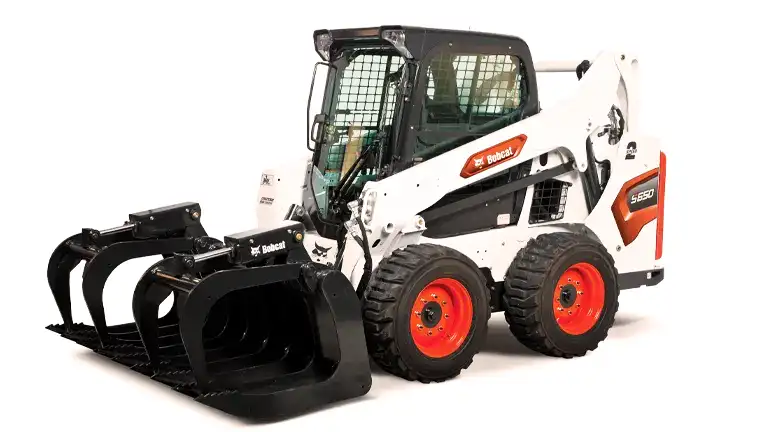
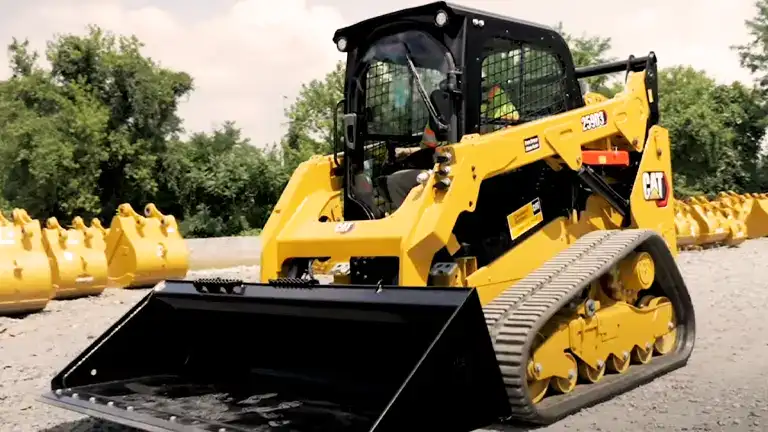
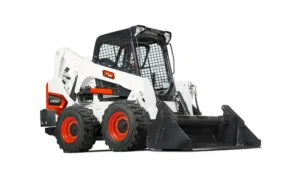
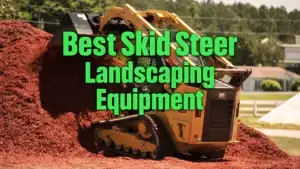
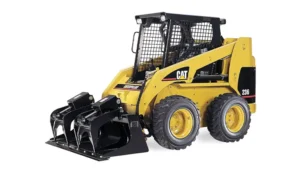
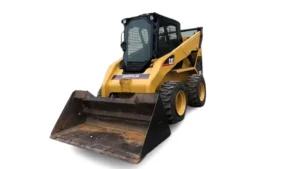
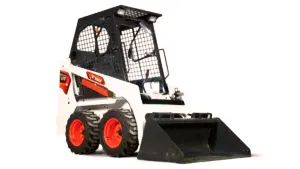

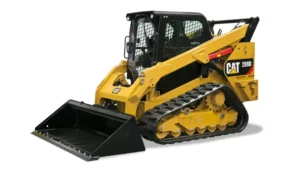
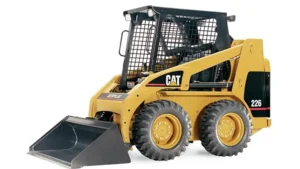


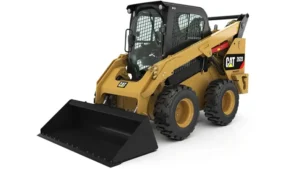

Leave your comment